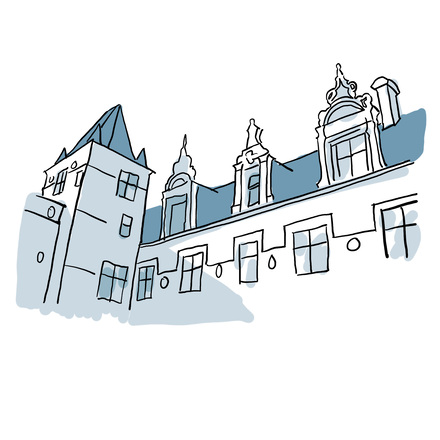
1. Than mansion
The mansion on your right is the Than Mansion. It was built around 1527 for Thomas Morel, who was lord of two communes in Calvados. Read more
Tour
4,6 km
1h50
22 audios
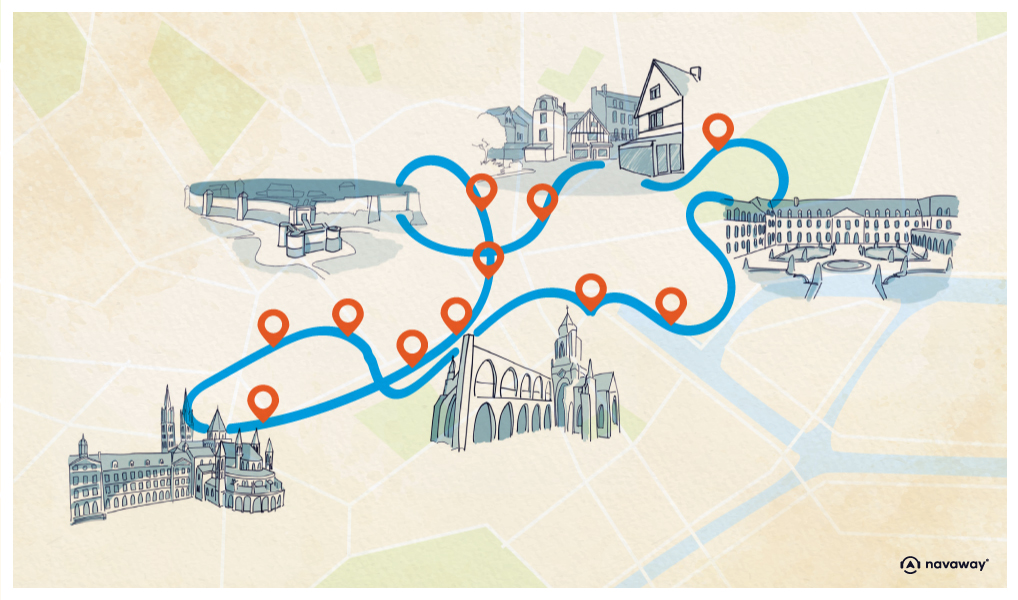
Text version
Although Caen is a discreet town that doesn’t get a lot of publicity, it conceals a heritage steeped in a thousand years of history. The city was deeply influenced by William the Conqueror and his wife Matilda of Flanders, and now boasts two spectacular abbeys and a castle that once ranked among the largest fortresses in Europe! Caen’s old town was spared by World War II bombings, and offers a picturesque centre with charming streets where timber-framed houses stand alongside beautiful bookshops and terraces featuring bars, cafés and restaurants. It’s also a very green town, open to nature and close to the wild beaches of the English Channel. Perfect for a breath of fresh air steeped in history, to be enjoyed without moderation!

The mansion on your right is the Than Mansion. It was built around 1527 for Thomas Morel, who was lord of two communes in Calvados. Read more
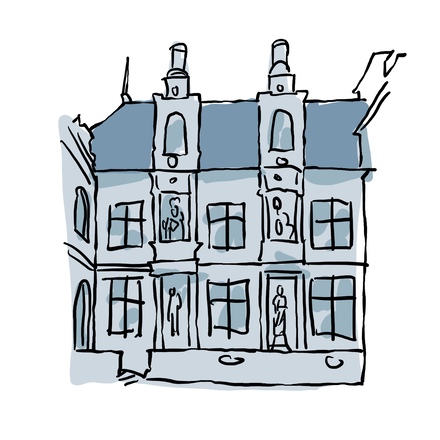
The most beautiful example of a Renaissance mansion in Caen can be found here, in the courtyard of the tourist office. Read more
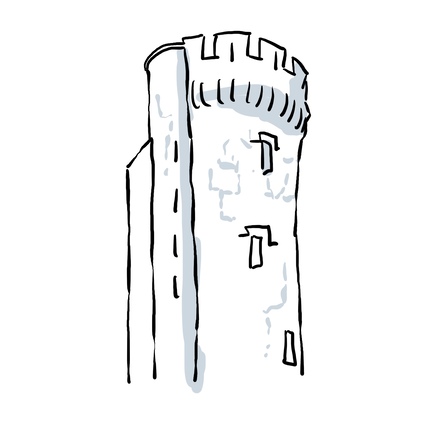
Caen's medieval heritage makes it natural to come across a 14th-century fortified tower right in the centre of town, between bus stops and traffic queues. Read more
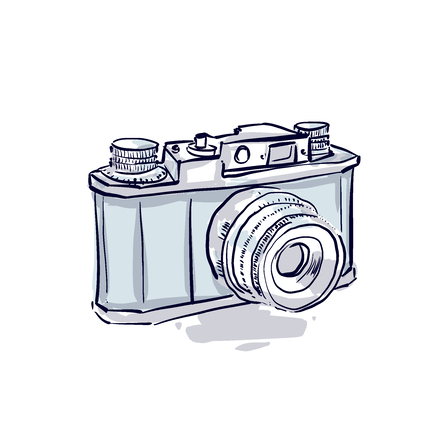
This is the Bassin Saint-Pierre, which today forms Caen's small marina. Read more
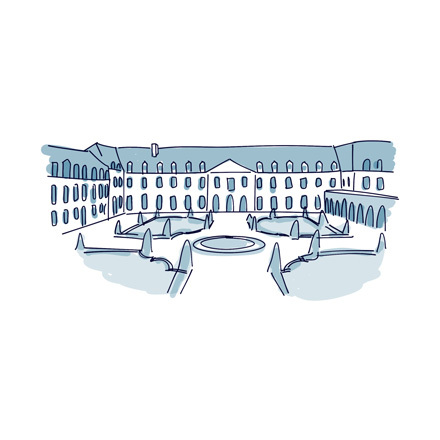
You've finally arrived at the Ladies' Abbey. The abbey was established by Duchess Mathilde in the 11th century while her husband was founding the men's abbey. Read more

As you pass by, you will see the remains of the former Saint-Gilles church, which was completely destroyed in the 1944 bombing raids. Read more
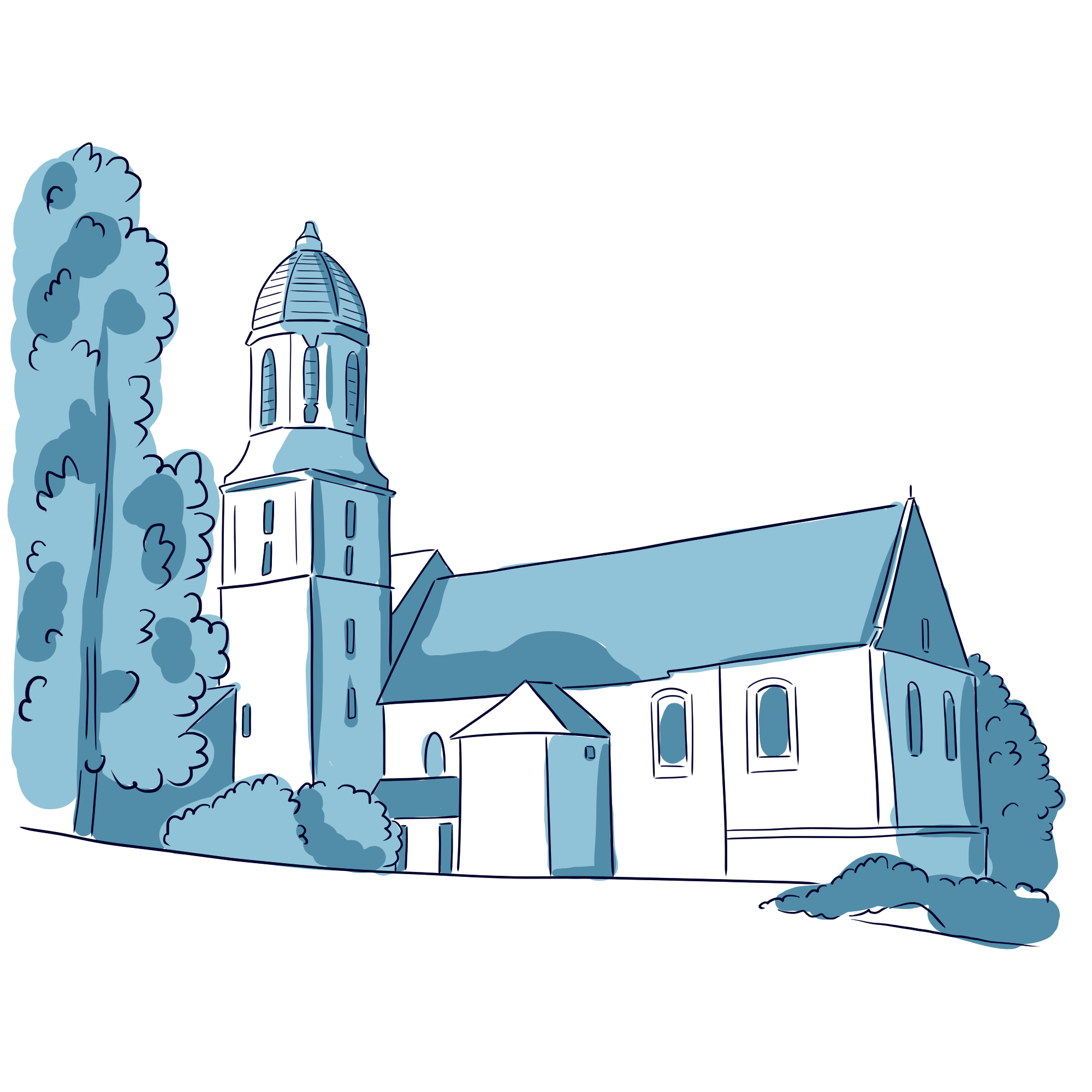
This is yet another decommissioned religious building in Caen. It was founded in the 13th century by Guillaume Acarin, a priest and adviser to King Philip Augustus. Read more
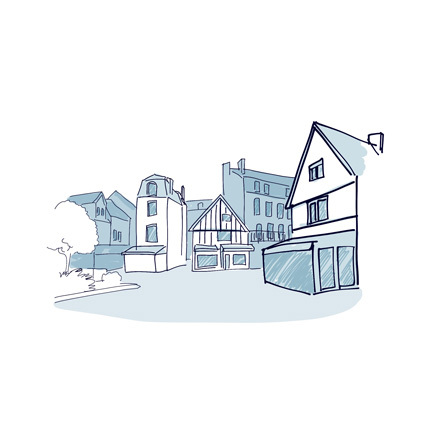
One glance around you is all it takes to realise that you've arrived in the heart of medieval Caen. Read more
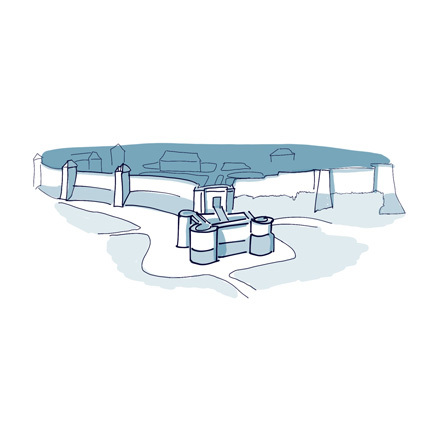
We have now arrived at the famous Caen Castle! It was built around 1060 by William the Conqueror, shortly before he became King of England! Read more
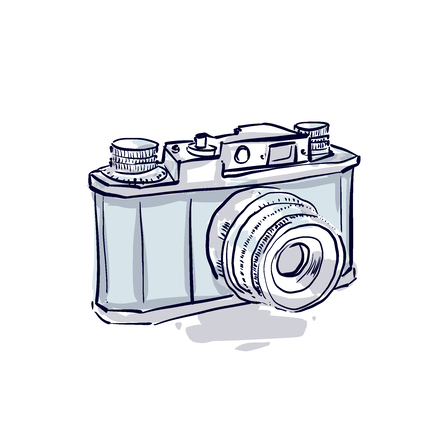
Don't hesitate to climb all the ramparts where ever you can find an access point - it's the best way to enjoy the view over the city. Read more
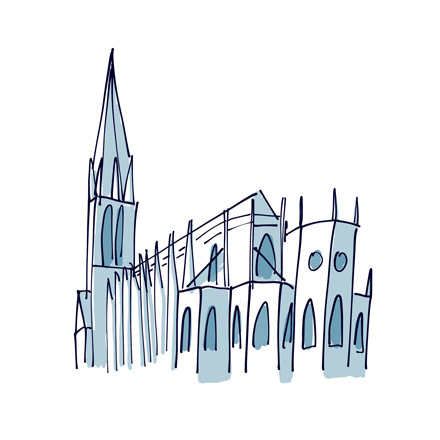
Granted, there are a lot of churches in Caen. The Saint-Pierre church, which stands in front of you, was the main building in Bourg du Roi. Read more
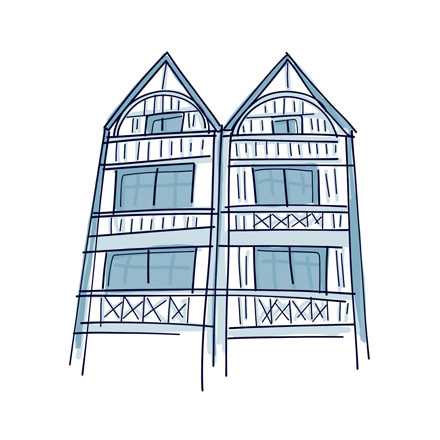
By chance, the two timber-framed houses standing proudly before you have recently been renovated! As a result, you can admire all the delicacy of this 16th-century work! Read more

The church on your right is the enigmatic Saint-Sauveur Church, formerly known as Notre Dame de Froide-Rue. Read more

You are now entering one of Caen's most fascinating streets. Read more
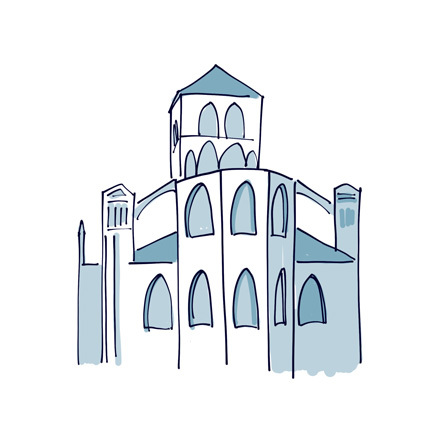
As you approach Saint Sauveur square, you come across Old Saint Sauveur Church. Read more
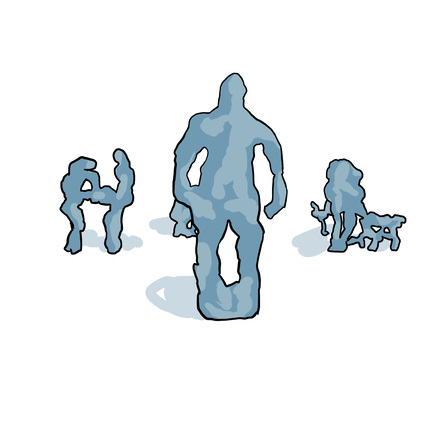
Saint Sauveur square is one of the city's oldest public squares! Read more
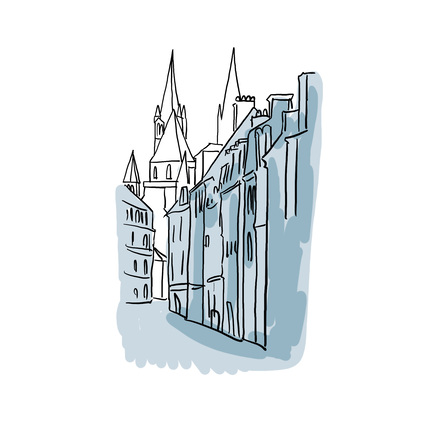
In France, and especially in the north, many towns have their own drinking spots. Read more

Why not settle down on a bench on the beautiful Jean Louvel esplanade to discuss the fascinating history of Normandy? Read more

Here, you stand on the Jean Marie Louvel esplanade, facing the impressive Men's Abbey. Read more
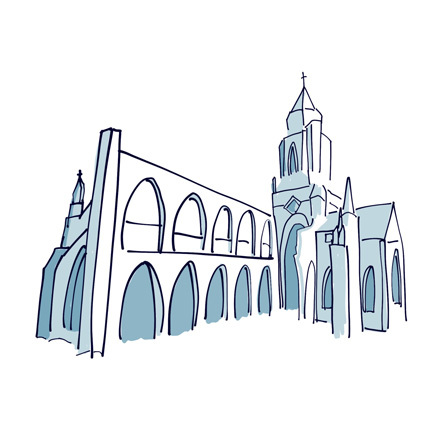
The ruins you see here is a church bearing the same name as the abbey church, but with one difference: this time it's Saint-Etienne-le-Vieux. Read more
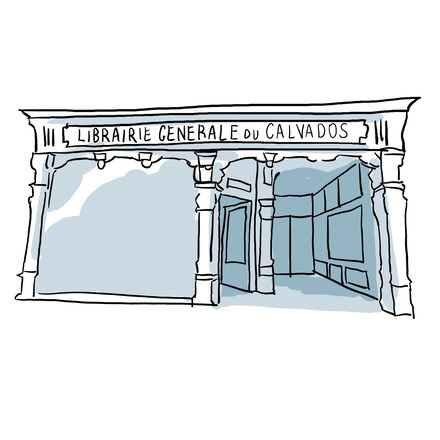
Caen is a city steeped in history and culture, with a host of lovely independent bookshops! One of which seriously stand out, you simply have to visit it. It's the Guillaume bookshop right in front of you. Read more

Now that we've arrived in Moulin street, I'd like to use this opportunity to say a few words on the importance of water in Caen over the years. Read more


Discover Caen with app
An interactive guide through the most beautiful streets, squares, and districts
22 fun audioguides full of historical facts, anecdotes, and legends
A poignant journey through history at the heart of Normandy
One of Caen’s must-sees is its famous memorial. Dedicated to the history of the twentieth century, this peace museum takes you through the major stages in the history of the world from the end of World War I to the fall of the Berlin Wall. The Memorial is located in the beautiful Bird Hill Park and is open every day from 9.30am to 6pm. It’s best to visit in the morning for a more peaceful experience. The tour lasts approximately 2 to 3 hours. If you’ve got the time, you can also stroll around the park, which provides a magnificent environment, as well as a superb view over the city.
If you enjoy strolling among exotic scents, be sure to visit Caen’s botanical gardens. As you wander around the paths and tropical greenhouses, you’ll discover thousands of species, including some rare ones, and medicinal plants. The site is open every day, and admission is free. Refer to the town’s website to know more about opening hours, which change according to the season.
On our tour of Caen, we focused on the historic centre, and now we’ll be taking you to the Presqu’île district. This former industrial zone is now a prestigious area in the heart of the city, with a focus on architecture and culture. Here you’ll find the modern Alexis de Toqueville library, designed as a cross, the Cargö contemporary music venue, artists’ residences, the Higher School of Arts and Media, and other multi-disciplinary venues, as well as shops, cafés and restaurants.
If you love medieval history and want to know more about the hectic life of William the Conqueror and his conquest of England, then you should stop at the Bayeux museum! The most famous medieval tapestry is on display in this small town around thirty kilometres from Caen. It is 69 metres long and has been classified by UNESCO as part of the International Memory of the World Register.
For those who prefer an alternative experience, you can hire an electric boat, paddle, canoe or other craft and visit Caen from the water on the Canal de l’Orme.
Caen is not only a quiet, pleasant town, it also offers you the chance to go to the beach! Just 15km from the centre, there are several seaside resorts along the coast. If you don’t have your own car, a city bus will take you there in just half an hour.
Last but not least is the D-Day landing beaches in Normandy, an absolute must-see! Don’t miss a trip to the famous Omaha beach, where you can also visit the memorial and the American cemetery. The whole theme of the Allied landings is a must-see in the region.
A region rich in history, heritage, and nature to explore
200 audioguided tours for cities all around the world
DownloadAfter a long day exploring the capital of Calvados and the iconic city of Normandy, you may be wondering where you can enjoy a good typical meal. Rest assured, Caen offers a wide selection of restaurants where you can indulge in local specialties. For a taste of local dishes, such as the pre-salted lamb raised in the Bay of Mont Saint-Michel, head to the Vaugueux district. This area is located near the Saint-Pierre Church in Caen and is home to several traditional restaurants known for their excellent cuisine.
Hotels in Caen are somewhat spread out, with options in various neighborhoods at reasonable prices. If you wish to stay near the historic city center, we recommend staying in the heart of Caen, near the Saint-Pierre Church. Some hotels are conveniently located for visiting the city without having to walk for hours or spend too much time on public transport. Alternatively, you can stay close to the marina, where the area offers a quieter atmosphere while still being near the tourist attractions.
When you visit Caen, it’s a good idea to explore the surrounding area. Normandy is a region rich in history, and a visit here will take you through some of the darkest hours of history. A historical visit wouldn’t be complete without a trip to the D-Day beaches, such as Omaha Beach and Utah Beach. Several museums are nearby for a unique experience that will leave a lasting impression. Continuing this historical journey, you can also visit the famous American Cemetery in Colleville-sur-Mer, which holds the graves of 9,387 American soldiers, including that of Theodore Roosevelt Jr. For a more uplifting experience, you can head to the iconic Mont Saint-Michel, a UNESCO World Heritage site. You’ll be amazed by the beauty of this rocky island—don’t forget to bring back some biscuits from La Mère Poulard! Finally, you can also visit Bayeux, a famous medieval town renowned for its tapestry.
End of the day, the visit is over, and now it’s time to relax with a drink. But where to go exactly? For a perfect drink, we recommend the Vieux Saint-Sauveur district. This chic area will take you back to medieval times. On the other hand, if you’re in the mood for a few drinks (just be careful!), head to Rue Écuyère. This street is known as the festive hub of Caen, and you’re sure to have a great evening.
Caen is well-connected by all means of transport. From Paris, departing from Gare Saint-Lazare, it takes just two hours to reach the capital of Calvados. The train is a convenient option, as it is not only the most eco-friendly mode of transport but also the Caen train station is near the city center. However, it’s also possible to fly into Caen. The Caen-Carpiquet airport is located 7 kilometers from the city center, and you can reach downtown by shuttle or taxi. If you’re driving from Paris, take the A13 highway for about a two-hour drive, just like the train. If you’re coming from the western part of France, like Rennes, the A84 will take you to Caen in about two hours as well.
Caen is very well served by local public transport. The city has three tram lines connecting major tourist spots. It’s also possible to rent bikes for a leisurely visit, which is a great way to explore the city. Several buses are also available, or if you prefer, the city center isn’t too large, so you can simply walk around to enjoy the charming half-timbered houses of Caen.
With an average of 180 rainy days per year, Caen is used to overcast weather. If you want to visit Caen, the best time is between May and September, according to the weather. During winter, Normandy experiences relatively low temperatures, and the proximity to the English Channel can make it quite windy, disrupting certain activities. Once the warmer days arrive, Caen becomes a much more pleasant city to visit. The number of tourists remains reasonable even during the summer, so you’ll be able to enjoy all the activities you want without too much hassle.
You don’t need more than two or three days to visit Caen. Tourist spots like the Saint-Pierre Church, the Abbaye aux Dames, the Abbaye aux Hommes, and the lovely Vaugueux district with its half-timbered houses are all located in the city center. So, there’s no need to plan a five-day stay unless you want to explore the surroundings of Caen, such as Colleville-sur-Mer and the famous and impressive American Cemetery with the 9,387 soldiers who died during World War II, or the D-Day beaches. For a complete stay in Normandy, which is a region full of history, five days would be ideal.
Caen is a beautiful city that surprises everyone who visits. People often underestimate the beauty of Normandy, a region that is iconic to France. With family, it’s enjoyable to stroll through the Vaugueux district, stop for a drink, and have a bite to eat. But before heading to the restaurant terraces, you’ll need to work for it! You can visit the city’s tourist sites, such as the Abbaye aux Dames, the Abbaye aux Hommes, and the Caen Castle. A trip to Caen cannot be completed without a visit to the Second World War Memorial. Caen was severely affected during this dark period, and it’s highly recommended to book your tickets in advance, as the number of tourists can be high during peak seasons. Afterward, you can visit the Saint-Pierre Church, take a walk along the Orne River, and explore the historic center to admire the half-timbered houses on the cobblestone streets.
Comments